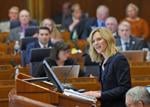A growing chorus of concern is emanating from North Dakota as healthcare organizations and insurance regulators issue a stark warning about the escalating financial burden facing residents utilizing the Affordable Care Act (ACA) marketplace. Their alarm centers on the significant potential for increased out-of-pocket premium costs, a development poised to deepen the already pressing issue of medical debt across the state.
Stakeholders within North Dakota’s health sector, including prominent medical associations and regulatory bodies, have meticulously analyzed market trends and coverage dynamics, concluding that the trajectory of ACA premium increases is unsustainable for many. This anticipated surge is not merely a statistical projection; it represents a tangible threat to the financial stability of thousands of families who depend on these plans for essential health insurance coverage. The core fear is that as premiums climb, the accessibility of affordable healthcare will diminish.
The ramifications extend directly to the pockets of consumers. Experts predict that this rise in healthcare costs will exacerbate the challenge of medical debt in North Dakota, pushing more individuals and families into financial precariousness. Vulnerable populations, particularly those managing chronic conditions or requiring frequent medical attention, are expected to bear the brunt of these increases. For these individuals, the ACA often serves as a crucial lifeline, and any significant cost escalation could jeopardize their ability to maintain vital treatment and services.
Compromised access to care is a critical concern underscored by this looming crisis. If North Dakotans are faced with unaffordable premiums or prohibitively high deductibles, they may be forced to make difficult choices between seeking necessary medical treatment and covering other fundamental household expenditures like housing or food. Such decisions could lead to delayed care, worsening health outcomes, and ultimately, a broader public health challenge, impacting the overall well-being and productivity of the state’s population.
This situation in North Dakota reignites ongoing national debates concerning the long-term sustainability and affordability of the Affordable Care Act. While the ACA aimed to expand health insurance access, its mechanisms for cost control remain a contentious point. States like North Dakota, with unique demographic characteristics and economic landscapes, often experience these national pressures with localized intensity, highlighting the need for tailored solutions that address their specific challenges in managing healthcare costs.
In response to these impending financial pressures, North Dakota’s regulators are urgently advocating for collaborative efforts and proactive policy interventions. The call is for a multi-pronged approach involving state and federal lawmakers, healthcare providers, and insurance companies to devise strategies that can mitigate premium hikes and ensure health insurance remains within reach for all citizens utilizing the marketplace. The goal is to safeguard healthcare accessibility and affordability for all North Dakotans, preventing a deepening of the public health crisis.
The alarm raised by health organizations and regulators in North Dakota serves as a critical indicator of the pressing need to address the affordability of healthcare. Without timely and effective interventions, the state faces the real prospect of a significant increase in medical debt and a corresponding decline in access to essential health services for its residents. The focus remains on finding sustainable solutions to protect the financial health and physical well-being of North Dakota’s population.
Discover more from The Time News
Subscribe to get the latest posts sent to your email.






